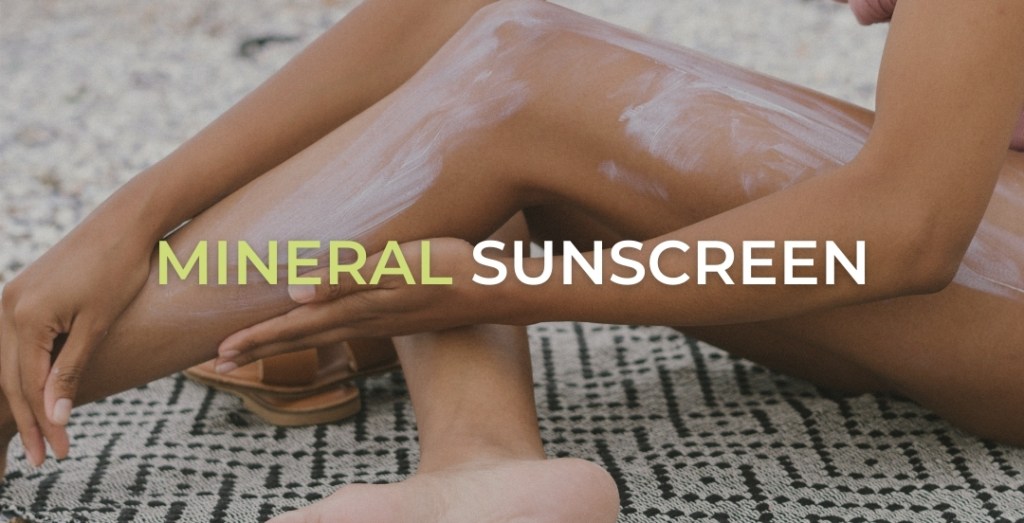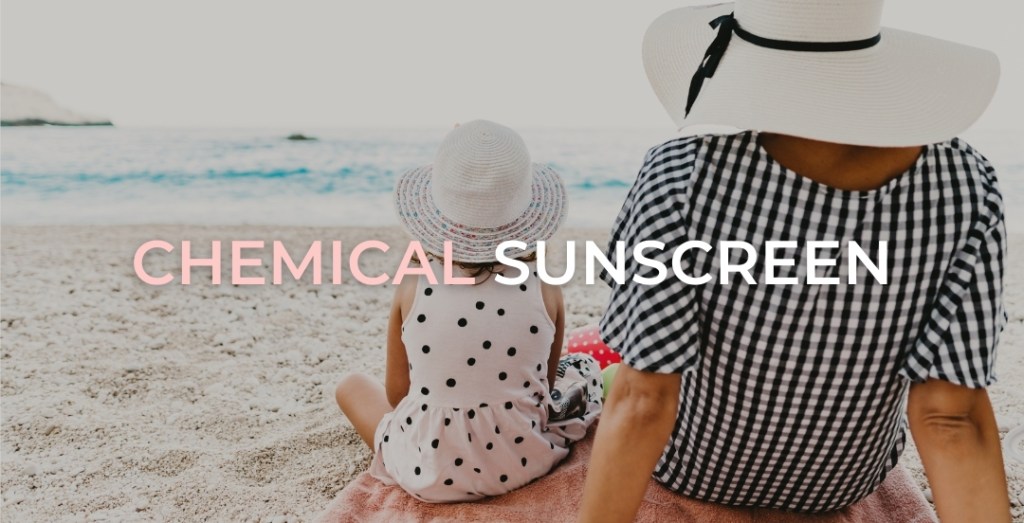Spending time outdoors is one of the best parts of summer. Unfortunately, sunshine can wreak havoc on your skin in the form of burns, blisters, and even skin cancer. Scientific studies support wearing sunscreen on a regular basis to protect against skin cancer and prevent sunburn. Wearing sunscreen also decreases the signs of aging. It’s becoming more common to see ingredients and sunscreen types listed on products, but do you know the differences between them? Here’s what to know about mineral sunscreen and chemical sunscreen.
About Mineral (or Physical) Sunscreen
PROS
- Works immediately
- Has a longer shelf life
- Great for sensitive skin
- No systemic absorption
CONS
- Can leave a white cast on skin
- Washes off more easily with water or sweat contact
The two most common ingredients in mineral sunscreens, titanium dioxide and zinc oxide, are the only sunscreen ingredients generally recognized as safe and effective by the FDA. Those who are concerned about long-term exposure to chemical ingredients may feel safer choosing mineral sunscreen since it works on skin’s surface and does not absorb.
Unlike chemical sunscreens which require up to 30 minutes to absorb, mineral sunscreen sits atop the skin and provides immediate protection. It can be applied on top of makeup and other skincare products. Mineral sunscreens are also ideal for children, people with sensitive skin, and people with melasma, a skin condition that causes patches of discoloration to form typically on the face.
What are the cons of mineral sunscreens? In people with combination or acne-prone skin, mineral sunscreen may contribute to breakouts. Mineral sunscreens also tend to leave a white film on the skin due to the titanium dioxide and zinc oxide ingredients.
About Chemical Sunscreen
PROS
- Longer protection from UV rays
- Lighter formulation; less product needed
- Easier to spread with no white film
CONS
- Takes between 20 and 30 minutes to start working
- May be more irritating to sensitive skin
Chemical sunscreens go on easily and quickly. Unlike mineral sunscreens, they don’t leave a white film on the skin and less product is needed. Do you tend to forget to reapply your sunscreen? Chemical sunscreens statistically perform better on consumer tests that look at how long they protect the skin from UV rays.
How Does Each Type of Sunscreen Work?
Physical sunscreen ingredients work by reflecting and scattering UV radiation, preventing it from penetrating the skin. The primary ingredients in physical sunscreen are minerals zinc oxide and titanium dioxide.
The ingredients in chemical sunscreen (like octisalate and avobenzone) actually absorb the harmful UV rays, keeping the skin beneath safe from damage.
Both of these approaches work to similar results, but you may prefer one over the other depending on your skin type and other preferences.
The Verdict: Something is Better than Nothing
A few of our dermatologists prefer mineral based formulas to chemical sunscreens, but they all agree that any type of sun protection is better than nothing. Here’s what’s most important when choosing a sunscreen:
- Full UV spectrum coverage (UVA and UVB)
- A minimum of SPF30
- Water resistance (and be diligent about reapplying!)
Curious about our favorite products? Check out Dermatologist Lori Ramirez’s top sunscreen choices here and Esthetician April Groh’s top choices here.




.4).2511050842400.png)
.jpg.2511241144379.webp)